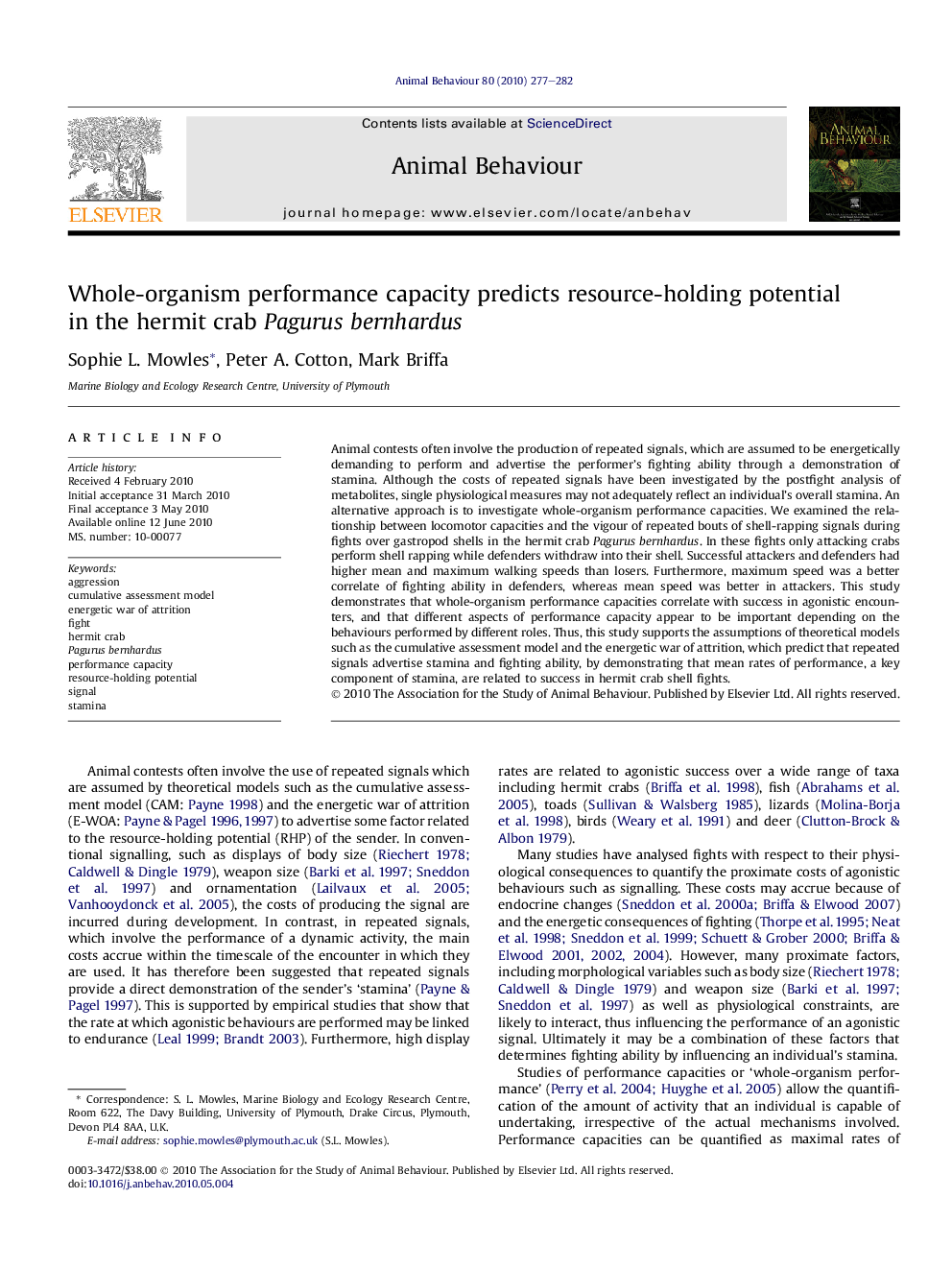| Article ID | Journal | Published Year | Pages | File Type |
|---|---|---|---|---|
| 2417146 | Animal Behaviour | 2010 | 6 Pages |
Animal contests often involve the production of repeated signals, which are assumed to be energetically demanding to perform and advertise the performer’s fighting ability through a demonstration of stamina. Although the costs of repeated signals have been investigated by the postfight analysis of metabolites, single physiological measures may not adequately reflect an individual’s overall stamina. An alternative approach is to investigate whole-organism performance capacities. We examined the relationship between locomotor capacities and the vigour of repeated bouts of shell-rapping signals during fights over gastropod shells in the hermit crab Pagurus bernhardus. In these fights only attacking crabs perform shell rapping while defenders withdraw into their shell. Successful attackers and defenders had higher mean and maximum walking speeds than losers. Furthermore, maximum speed was a better correlate of fighting ability in defenders, whereas mean speed was better in attackers. This study demonstrates that whole-organism performance capacities correlate with success in agonistic encounters, and that different aspects of performance capacity appear to be important depending on the behaviours performed by different roles. Thus, this study supports the assumptions of theoretical models such as the cumulative assessment model and the energetic war of attrition, which predict that repeated signals advertise stamina and fighting ability, by demonstrating that mean rates of performance, a key component of stamina, are related to success in hermit crab shell fights.
